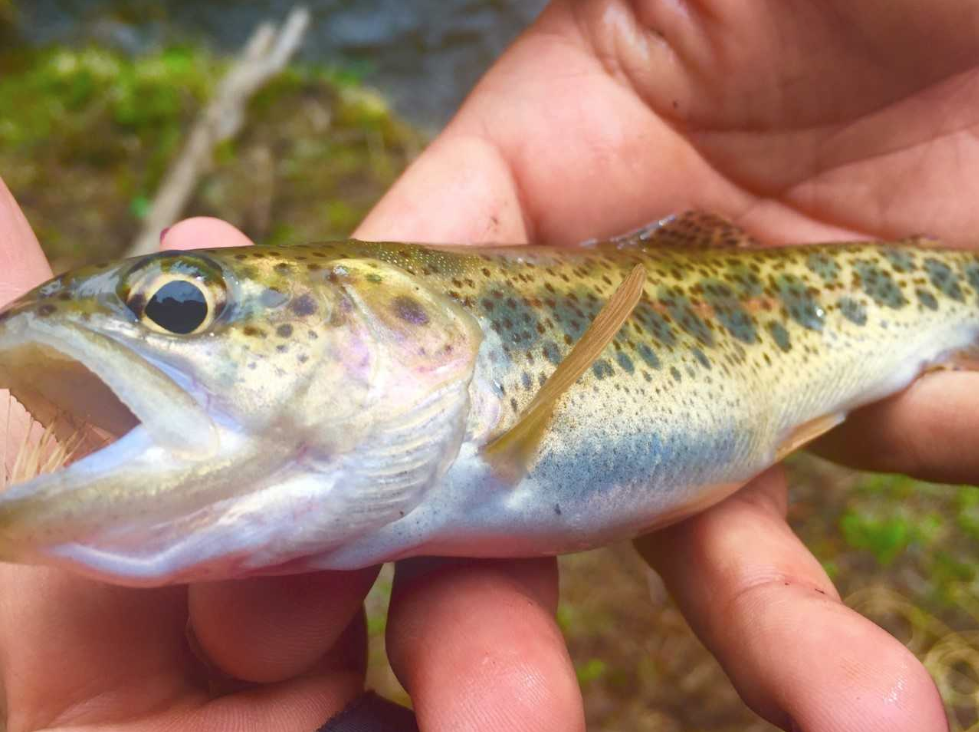This little small-stream rainbow gobbled up a skated caddis.
Ah, the dry fly, cast upstream over the perfect current seam. Is there a better sight in all of fly fishing?
And when it works out … Damn, it
‘s awesome. It’s inspiring, effective and, well, it’s proper. But things don’t always line up just right, do they? Sometimes, you’re faced with a downstream run, and getting that perfect drift means you have to cast that Elk-hair caddis downstream, breaking that tweedy rule, but maybe catching a tro
ut in the process. And, as often as not, sometimes, you end up “skating” that fly over the foam line. Why? Because it works.
Skating is nothing new in fly fishing, but the riverkeeper on the River Test might offer some strong words for the angler who dares pursue the noble trout with anything other than an upstream presentation. Just ignore him—he’s old school. Skating is one of the best ways to bring trout to the top, and there should be no guilt acquired when your caddis skis lightly over the seam and a nice rainbow rises to take it.
Just this past weekend, my best fishing buddy and I were chasing trout in a small stream high in the mountains above Cascade, Idaho. We charged through a few snow drifts looking for clear-ish water to fish as runoff pulsed off the mountains and into every creek, gully and wash. We came across a really small creek, and by the looks of it, I was certain it would be fishless. In fact, I was certain that, during high summer, this “creek” was probably dry (and it very well might be). But the water was clear (well, clear-ish) where most other creeks were stained with snowmelt.
We’d driven the hills for hours, enjoying that first real sojourn into the mountains. Fishing was more of a hopeful afterthought. When we came across this little stream, I noticed a really sexy run—long, slow and frothed with the perfect foam line.
“If there are fish in here,” I said. “They’re going to be right there.”
We only strung up one rod—I’ll be honest. I thought it was a long shot. I greased up a size 16 Elk-hair caddis, and my partner flipped the fly into the foam. She fed some line downstream (because approaching it from upstream was impossible, thanks to brush and a big, woody snag), and when the fly reached the end of the run, she lifted her rod, and the caddis skated it appreciatively. It took a second, but a small-stream rainbow darted from the depths and ate the fly.
Skating isn’t just a steelheader’s game. It works for trout, too. Last summer, I caught easily the biggest brook trout of my life in northwest Ontario by skating a fat Chernobyl over a deep run in an unnamed river that ran between two lakes. It was the brookie of a lifetime, without a doubt, and I didn’t catch it “upstream and dry.”
In austere mountain streams, skating works wonders. On mountain lakes, don’t hesitate to occasionally skate a fly back to you. It’s not illegal. It’s not even unethical. It’s just one more way to bring trout to hand.
— Chris Hunt



